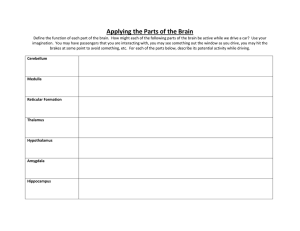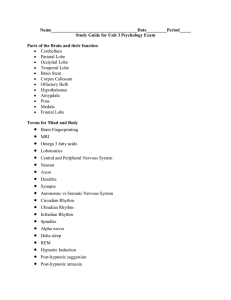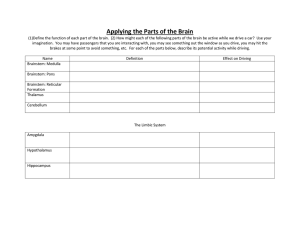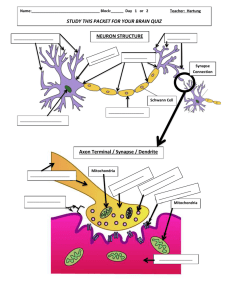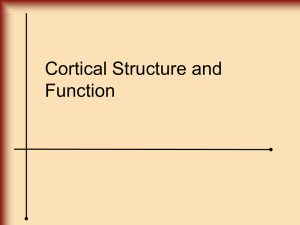The Brain** in Brain Computer Interface - CBMSPC
advertisement
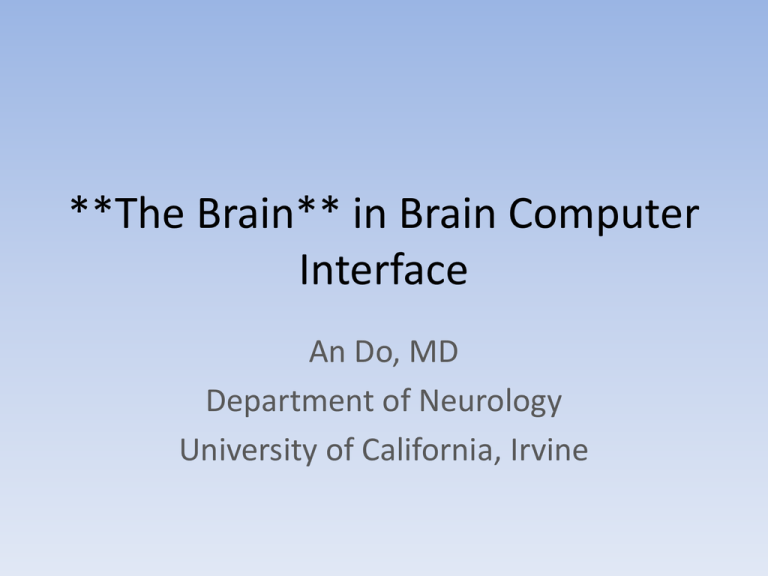
**The Brain** in Brain Computer Interface An Do, MD Department of Neurology University of California, Irvine The Brain • Source of thought, behaviors, and perceptions • Composed of billions of neurons in interconnected networks Brain Anatomy • 3 Major Parts Parietal Lobe Frontal Lobe – Cerebrum • • • • Frontal lobe Temporal lobe Parietal lobe Occipital lobe – Brainstem – Cerebellum Occipital Lobe Cerebellum Temporal Lobe Brainstem Movement Sensation Coordination Left vs Right Brain The Nervous System Brain Function Integration • Integration of all brain functions and neurological processes is similar to how multicore computer processors work. Diseases of the Nervous System • In such a complicated system, if any part is damaged, many problems can occur. • Neurologists, neurosurgeons, and neuroscientists study these problems Stroke Seizures Parkinson’s disease Dementia Brain Cancer Spinal Cord Injury Neurological Injury • Injury to the nervous system often causes irreversible damage – results in disability, sometimes devastating – occasionally results in very bizarre symptoms • Neurologists, neurosurgeons, and neuroscientists are actively studying brain injury to arrive at new understanding of the brain and new treatments – the Brain Computer Interface is one such example Why study the brain and nervous system ? • It’s the control center ! • There are many things even scientists still don’t know • Search for better understanding of brain function and brain repair • The answer to these problems will rely not only on the current generation of physicians and scientists alone, but also on future generations to come

